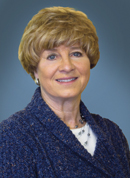Community Profile: Burned by Loss of Manufacturing, Rural County Vows To Diversify
Photo Gallery | Article
Photo Gallery - Huntingdon/Carroll County, Tenn.

Work is almost done on the new man-made lake. The $22.5 million project is expected to draw tourists from up to 250 miles away. Photo © Brian Marsh

The Dixie, formally known as the Dixie Carter Performing Arts and Academic Enrichment Center, opened in 2005 and is given credit for reviving Huntingdon’s downtown. The city got a $1 million state grant to apply toward the $3 million project, and fund-raising continues to pay for the rest. The city also makes up any deficit in the center’s approximately $1 million-a-year operating budget. Photo by Susan C. Thomson

Before the Dixie, downtown was “dead on the vine,” according to Mayor Dale Kelley. But the Dixie sparked a movement, and now all of the buildings on the courthouse square, as well as many on side streets, are occupied. Many have also been renovated, as were these on the left. Photo by Susan C. Thomson

At Republic Doors & Frames, Norman Burnham welds hardware reinforcements into a steel door frame. Employment at the company is down to 150 from 286 just three years ago. Mike Taylor, the company’s president, has yet to see an upturn on the horizon. Unemployment in the area is down from 18 percent during the recession, but the rate is still high—12 percent. Photo by Susan C. Thomson

Noranda, a nationwide aluminum company, is bucking the trend of a decline in manufacturing. It operates two plants in Huntingdon, employing a total of 400 people, making it the largest employer. The rolling mill (left) has the lowest conversion cost (excluding metal) for foil stock production in North and South America, according to the company. Photo © Noranda Aluminum Holding Corp.

Bethel University, in nearby McKenzie, has seen a building boom in the past couple of years. The boost in students and employees has helped to counteract the decline of manufacturing in the area. Photo by Susan C. Thomson
Sometime this summer, a man-made, 1,000-acre recreational lake is due to open to the public in Carroll County, Tenn. The new lake is a $22.5 million public investment in the tourism potential of a rural county that seeks economic development and diversification.
As recently as the mid-1990s, one of every five county jobs was in the apparel industry, says Brad Hurley, president of the Carroll County Chamber of Commerce, which doubles as the county's economic development arm. Factories making shirts, pajamas and jeans employed people by the hundreds. By 2000, after a cascade of plant closings, all of those jobs had vanished.
As the industry was folding, county leaders made a vow. "What we did was say: 'We never want that to happen again. We don't ever want to be dominated by one area of the economy,' " Hurley says.
The time was right for a hard new look at a bold idea first floated in the 1970s: Dam a local creek to make a lake. A plan to do so had made it through the Tennessee House of Representatives in 1984 but failed to get necessary environmental approvals.
By 2000, the county had come up with a new, more environmentally sensitive plan for a different creek, and that year county voters narrowly approved a $10-a-year vehicle tax to go toward lake construction. Then came years to secure all of the permits and to survey, buy and clear the land. In 2008, construction started, with the centerpiece—a 2,400-foot-long, 60-foot-high dam. By this past spring, the big hole had been pumped full of water and stocked with fish.
The lake is three miles south of Huntingdon, Carroll County's seat, where Dale Kelley is mayor. Widely viewed in the county as a visionary, he had long been the lake's No. 1 champion. Taking office in 1992, he turned his sights on a city downtown he describes as "dead on the vine" at the time. Characteristically, he proposed an imaginative remedy: a performing arts center.
To realize his dream, the city bought and tore down a strip of vacant buildings taking up one side of its courthouse square and in their place erected the Dixie Carter Performing Arts and Academic Enrichment Center. Opened in 2005, the center is named for the actress known for playing Julia Sugarbaker in television's "Designing Women" series. In Huntingdon, she's also known as a hometown-girl-made-good and a high school classmate of Kelley's. Carter supported the project, which includes a two-story, 471-seat theater named for her husband, actor Hal Holbrook, who helped design it.
The Dixie, as locals call it, presents professional performances nearly every other weekend. Highlights of the 2011-2012 season have included sold-out appearances by Pat Boone, an Eagles tribute band and country singer-songwriter "Whispering" Bill Anderson. The center is home to local theater groups and offers dance, pottery and music classes for children and adults.
The city got a $1 million state grant toward the project's total cost of $3 million. Additional contributions have reduced the city's debt to under $1 million, and fund-raising continues, Kelley says. The city also makes up any deficit in the center's approximately $1 million-a-year operating budget.
Yet, the center has already paid for itself, he says. "Its impact on downtown Huntingdon has been dramatic."
All of the courthouse square buildings are full now, their facades postcard-pretty, and business has perked up on the side streets, as well. The revitalized downtown, catalyzed by the Dixie, has enhanced the city's livability, image and sales tax revenue, Kelley says.
Michael E. Cary, president of Carroll Bank & Trust, counts the lake and the Dixie as major steps forward for a county where the unemployment rate spiked at 18 percent during the last recession. Although the rate has been trending down since, Cary says the area remains in a "semirecessed state," unemployment its biggest economic challenge.
Mike Taylor, president of Republic Doors & Frames, agrees. His company, maker of reinforced security doors for commercial and institutional uses, enjoyed its busiest and most profitable year in 2008, he says. A year later, when the market for the company's products dropped 40 percent, the company slashed its local workforce of 286; it's now down to 150. He is not yet foreseeing an upturn.
According to the Chamber of Commerce, more people leave than come to Carroll County for work. So, its unemployment rate is, to some extent, a function of a continuing series of plant closings in recent years in contiguous counties.
Amid the many shutdowns, Noranda remains the standout exception. The nationwide aluminum company gained a foothold in Huntingdon in 1979 when it bought an existing plant. In 2000, with assists from state grants, state tax credits and local property tax concessions, it opened a $240 million, state-of-the-art plant on the same site.
The two-plant operation turns molten metal into thin, miles-long sheets and ships them out as rolls weighing tons. Late last year, the company announced that it was studying the feasibility of adding a $40 million, 40,000-square-foot recycling center to the complex. It would create 30 jobs, company officials say.
As manufacturing has shrunk as a share of Carroll County's economy, some of the resulting employment slack has been taken up by health care and higher education. Enrollment at Bethel University, sponsored by the Cumberland Presbyterian Church, soared 128 percent to 2,975 students from 2004 to 2009, according to The Chronicle of Higher Education. The count includes students studying toward a growing array
of online bachelor's and master's degrees, at the university's various other Tennes-
see locations and on its home campus in McKenzie, Carroll County's largest city, a dozen miles north of Huntingdon.
That campus, with 800 students now, includes a science building and three residence halls, all built in the last several years. A new 126,000-square-foot student center with a cafeteria, gymnasium and chapel is under construction.
The county's robust health-care sector is visible in dozens of medical offices, clinics and agencies, many clustered around its two hospitals, Baptist Memorial in Huntingdon and McKenzie Regional in McKenzie, both of which have been expanding services. The latter's neighbors include the McKenzie Medical Center, a one-stop primary care clinic with a pharmacy, labs and 30 providers, including physicians, nurse practitioners and physician assistants. A 40,000-square-foot addition that was finished last year more than doubled the center's space; the addition made room for more specialists and diagnostic services and includes a sleep lab, new administrative offices and an open-sided MRI.
Hurley says 1,450, or 12 percent, of county jobs are in health care today. The sector has grown significantly but not to a point of dominance, and the county's economy has grown more diversified than before, he says. He describes his job of making sure it stays that way as something of a juggling act.
"You need to take all of these balls and keep them up in the air," he says.
One of those is manufacturing. Hurley says his office is doing everything possible to attract tenants to the county's four industrial parks. Although the competition is tough, it's "a process that we have to continue because manufacturing jobs pay so well,"
he says.
The lake is yet another ball.
With 22 miles of jagged shoreline and an average depth of 20 feet, it will be the largest man-made lake in western Tennessee. Its location—25 miles north of Interstate 40, a two-hour drive northeast from Memphis or west from Nashville—makes it "very marketable within 250 miles," Hurley says.
The lake will open with two beaches and a boat launch. Fishing is expected to be a big draw, but that won't start until its stocks reach catchable size, next year at the earliest. Residential and commercial development is seen as following in good time, generating jobs and tax dollars.
"At the end of five years, you'll be able to see firsthand the growth and real potential
of the lake," Hurley says.
Huntingdon/Carroll County, Tenn., by the numbers
| POPULATION FOR CITY/COUNTY |
3,985/28,518 (1)
|
| LABOR FORCE |
NA/13,448(2)
|
| UNEMPLOYMENT RATE |
NA/12 percent (2)
|
| PER CAPITA PERSONAL INCOME |
NA/$25,680 (3)
|
| (1) U.S. Bureau of the Census, 2010 census | |
| (2) BLS/HAVER, December 2011, seasonally adjusted | |
| (3) BEA/HAVER, 2009 | |
| Largest Employers | |
| Noranda USA Inc. |
400(1)
|
| McKenzie Medical Center |
300(1)
|
| Bethel University |
300(2)
|
| Baptist Memorial Hospital |
230(1)
|
| Carroll County Government |
192(2)
|
| Republic Doors & Frames |
150(1)
|
| (1) Self-reported (2) SOURCE: Carroll County Chamber of Commerce |
|
Views expressed in Regional Economist are not necessarily those of the St. Louis Fed or Federal Reserve System.
For the latest insights from our economists and other St. Louis Fed experts, visit On the Economy and subscribe.
Email Us




